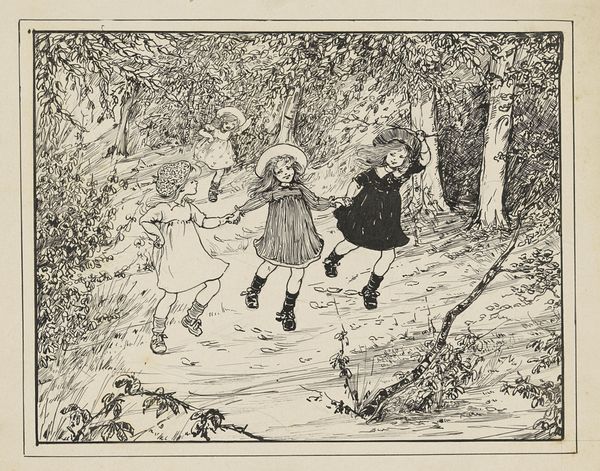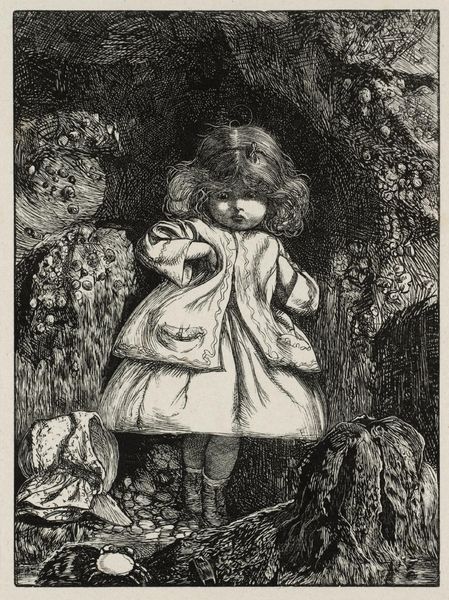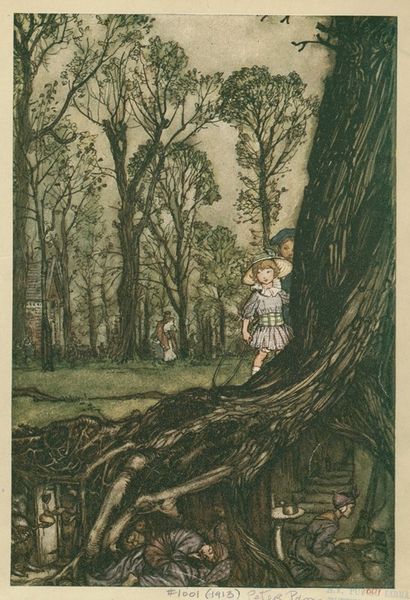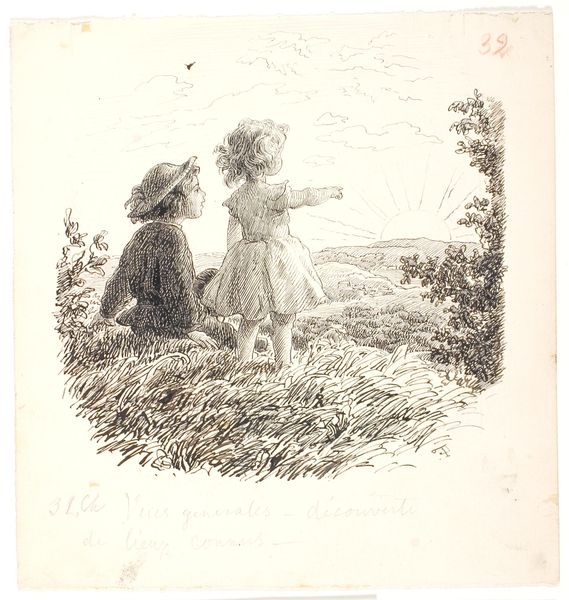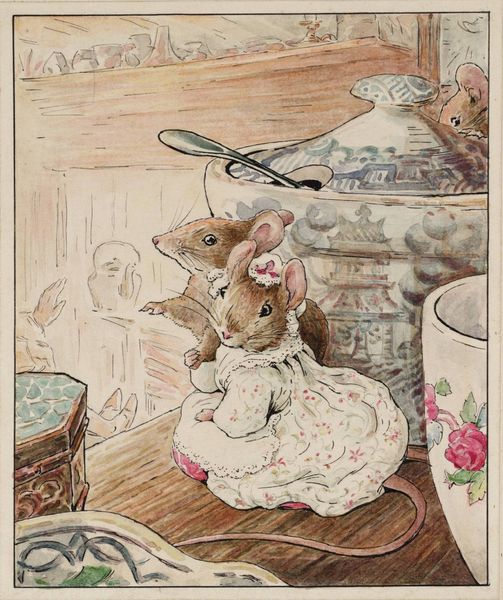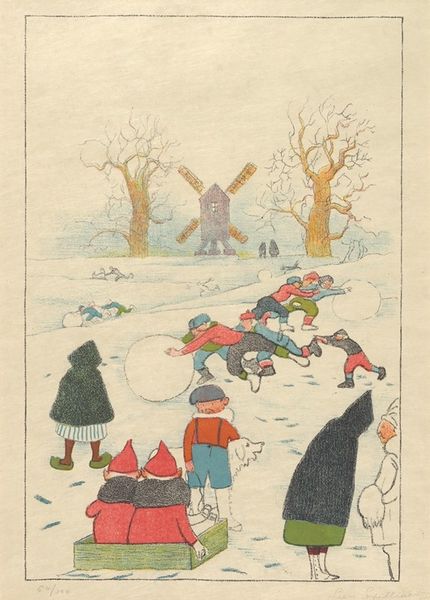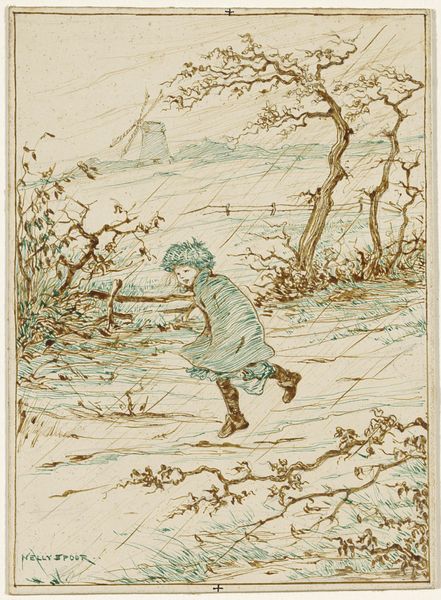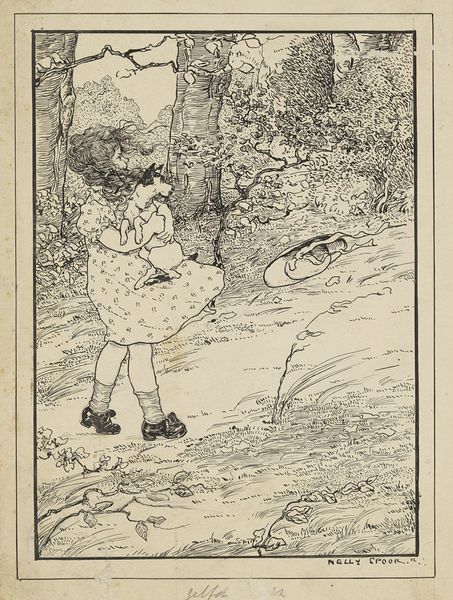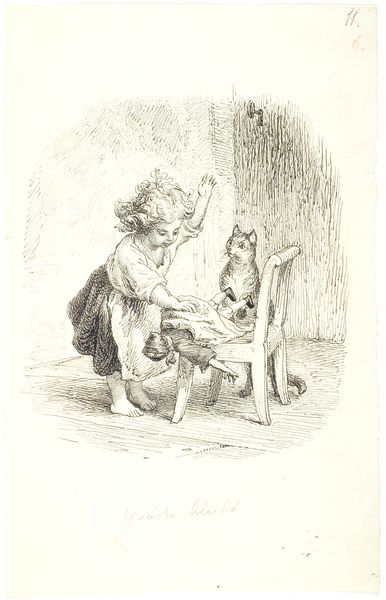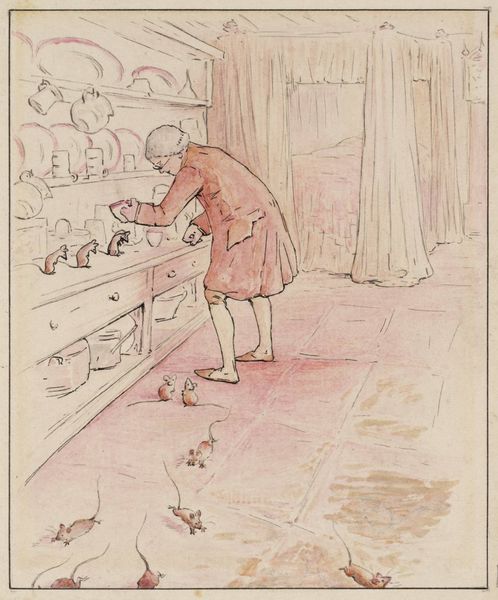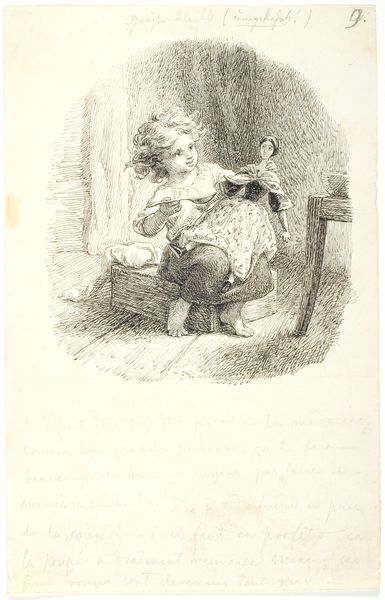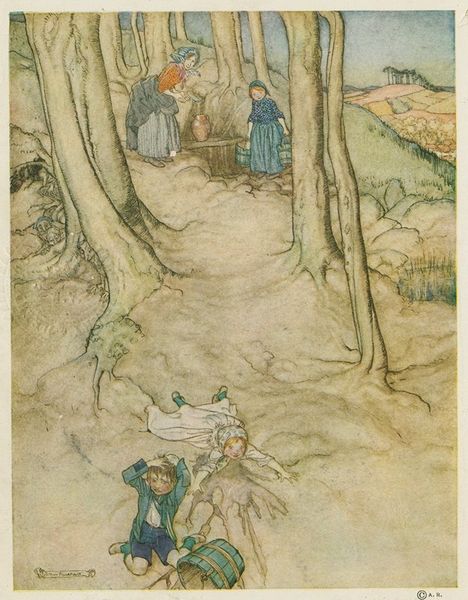
Copyright: Public Domain: Artvee
Curator: Let's consider Arthur Rackham’s illustration, “The Crab and His Mother,” created around 1912 using ink and watercolor. It feels like a scene plucked straight from a fable. Editor: Yes, immediately, there's a remarkable tension between the delicate rendering and the unsettling forms of the crab characters. The subdued palette reinforces a sort of dreamlike quality. Curator: Absolutely. Rackham gained renown for his illustrations of classic fairy tales and folklore. His style often drew from the Romanticism, tapping into anxieties surrounding the rapidly changing social and political landscape of early 20th-century Britain. Editor: The composition itself is masterful. Note how the figures dominate the foreground, drawing our attention to the minute details—the mother's patterned shawl, the son's stooped posture, these all work to give volume and character to each figure. The stark expanse of the beach and vaguely defined background landscape creates a sense of isolation. Curator: Right, this evokes many classic stories, of fractured families, lost inheritance, maybe even critiques of social climbing within a rigid class system, something keenly felt in that era. Rackham, however, often refused being didactic; he sought the atmospheric, aiming to use the visual to stir deeper connections. Editor: Visually, these crab-people don't align to familiar archetypes. They look almost miserable! One can infer the characters and mood without having any previous understanding of the fable. What sort of story are these forlorn crustaceans living? Curator: Well, Rackham's pieces would appear across books of prose or verse as commissioned works, thus often paired with various different narratives; sometimes morality tales, sometimes dark satire. Here, though, absent any specific moral being overtly represented, maybe what endures are raw questions around ambition, societal pressures and familial expectations. Editor: Indeed. It all seems so deceptively simple—yet the texture and visual nuance create lasting, enigmatic impressions about identity and storytelling that outlive just the tale itself. Curator: Yes, this watercolor illustration does capture a sense of how images work, not just as a historical snapshot, but more vitally as something actively in conversation with our present experiences.
Comments
No comments
Be the first to comment and join the conversation on the ultimate creative platform.
